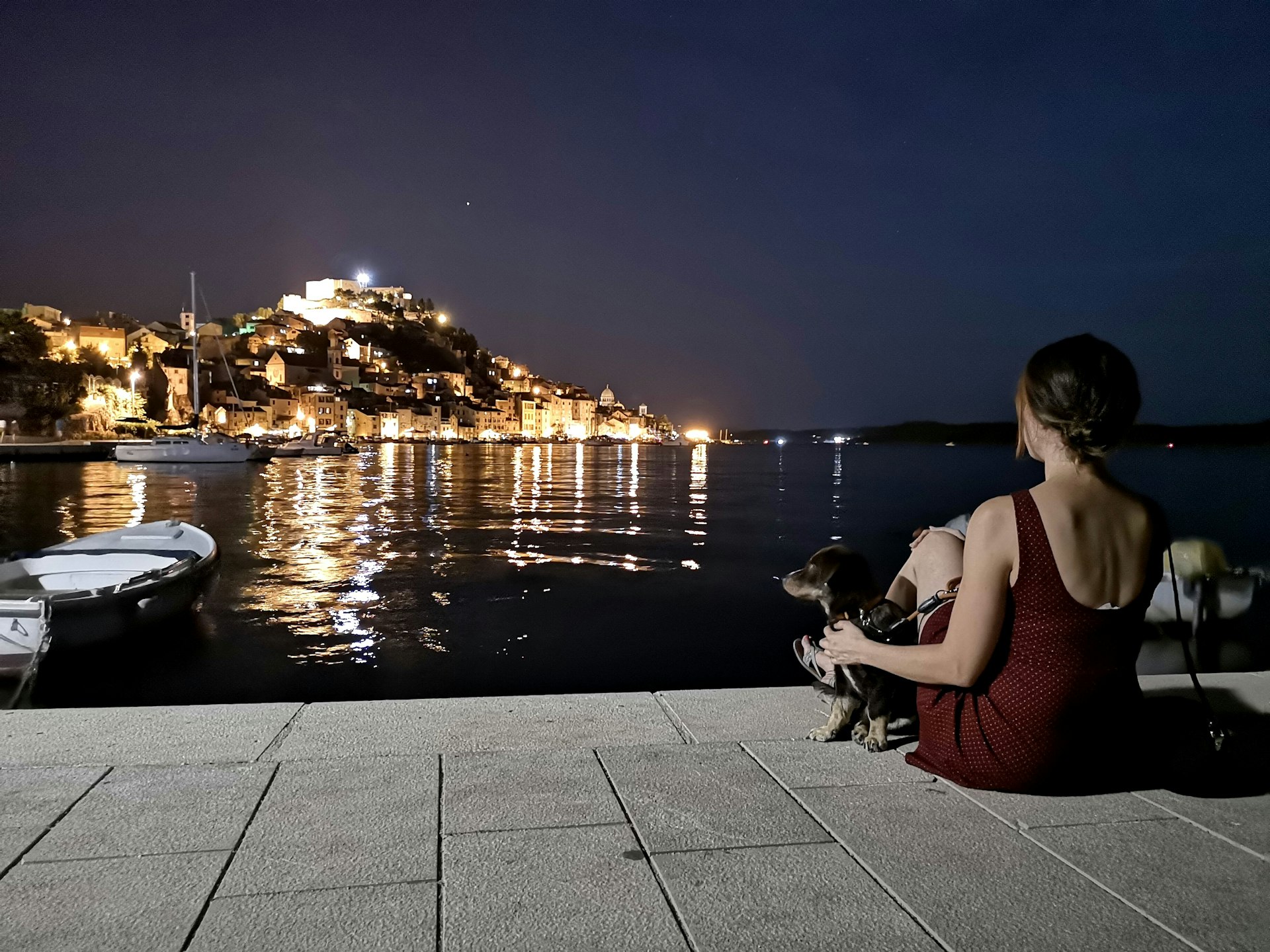
Lucie Grace is a travel writer who has lived in Croatia. Here, she argues that travelers can skip busy Dubrovnik and head to the lesser-known Šibenik instead.
In 2022, Croatia, a nation of just four million people, welcomed 18.9 million visitors. So it’s fair to say that tourism in this European nation is once again thriving.
And for good reason. It’s a downright stunning country, full of natural wonders and fascinating history. And this isn’t a recent trend: people have been heading for holiday on the Adriatic coastline since the 1880s, when resorts proliferated along its breathtaking blue waters. Still, nothing could have properly prepared Croatians along the Dalmatian Coast for the Game of Thrones effect. Shot partially in Dubrovnik, the HBO sensation caused a boom in tourism that has been quantified by researchers at University of Zagreb. Yet there’s a lot more to Croatia than its King’s Landing stand-in.
Get the inside scoop on the latest cultural happenings all over the world delivered weekly to your inbox with our email newsletter.  Dubrovnik is gorgeous – as the thousands of “Game of Thrones” who descend on it every year will agree © Pauline Lewis / Getty Images
Dubrovnik is gorgeous – as the thousands of “Game of Thrones” who descend on it every year will agree © Pauline Lewis / Getty Images
What to skip: Dubrovnik
Dubrovnik is known as the “Pearl of the Adriatic” for a reason. The old city’s medieval walls encase some of the grandest baroque architecture in the world. Radiant marble buildings gleam in the sun. On a quiet day, it’s atmospheric and transportive, taking you back to maritime Europe of centuries past.
The problem is that quiet days are scarce.
With numerous flights from major European cities and New York arriving at Dubrovnik’s airport during peak season, and cruise liners pulling up sometimes three a day, the old town gets gridlocked. Hordes of people funnel into the charming old streets, which become a mass of bodies.
The other unavoidable Dubrovnik factor? Uncomfortably punchy accommodation prices. Expect to pay at least €40 a night for a dorm bed and €100 (and quickly up from there) for a private room. “Why not try visiting in the off-season?” I hear you cry. Because the old town shuts down. Similar to Venice, Dubrovnik is a victim of its own success. Only a handful of locals can afford to live in the historical center anymore, and consequently very few businesses stay open all year.
This means that if you want to experience the city without the throngs, your window narrows to late May or early October. Yet there are alternatives within Croatia that captivate for the entire season without the crush of the crowds.
 In Šibenik, you can take in history, natural beauty and stunning architecture without the throngs of Dubrovnik © Borna Horvatinovic / EyeEm / Getty Images
In Šibenik, you can take in history, natural beauty and stunning architecture without the throngs of Dubrovnik © Borna Horvatinovic / EyeEm / Getty Images
Where you should go instead: Šibenik
Gorgeous Šibenik has a history that’s just as rich as Dubrovnik’s, with an old town that is undeniably more tranquil. Nestled in a sea inlet between Zadar and Split, the tiny city certainly shares similarities with Dubrovnik. Both were maritime trading hubs in the Middle Ages. Both were conquered by the Venetian Republic, and therefore contain a plethora of gorgeous Venetian-style architecture. And both, of course, are adjacent to the glorious Adriatic. Yet charming Šibenik has a population of just 34,000 locals and lacks the dense tourist crowds. This means that in addition to the idyllic beauty, there’s still the normalcy of everyday life here, with a lighter vibe in the air complementing the sea breeze.
 The delights of the Adriatic Sea are accessible to anyone who visits Šibenik © Solovyova / iStock / Getty Images Plus
The delights of the Adriatic Sea are accessible to anyone who visits Šibenik © Solovyova / iStock / Getty Images Plus
From the Riva, a seaside promenade, stairs sweep up to historic St James Cathedral, built from bright white stone mined from the neighboring island of Brač. You’ll see a montage of architectural styles from different eras, with both Gothic and Renaissance features piled on top of one another like a layer cake. The compact center is home to 22 elegant churches – and the church and monastery of St Lawrence is an unmissable one, with a very zen garden in its churchyard.
Šibenik also has great restaurants. Charming seafood stalwart More (led by the legendary Irena) is a stand out-spot on the Riva. And Pelegrini is a Michelin-starred treat where chef Rudolf Štefan serves a four-course menu to lucky diners that often include the country’s jet set (soccer star Luka Modrić is known to swing by when in town).
The old town feels more like King’s Landing in design than Dubrovnik, its thin alleys and passageways connecting wider, marble-paved artery lanes that all flow up toward the peak of the hill, St Michael’s Fortress. Destroyed and rebuilt numerous times over the centuries, this citadel is thought to have traces that date back to the Iron Age; it was first recorded as a church in 1066. It is now home to an open-air auditorium where Bryan Ferry, Róisín Murphy and The National have all performed.
 Make a day trip to Krka National Park © Getty Images
Make a day trip to Krka National Park © Getty Images
Krka National Park is just one of the mighty natural sights close to Šibenik. You’ll also find estuaries to swim in and great pebble beaches to lounge on: Banj beach’s shores overlook the old town, Rezalište beach is a 10-minute drive east and Olive Beach is 15 minutes by car (or a quick boat ride from the Riva). Boats will also ferry you to the Kornati Islands, a beautiful archipelago and another of Croatia’s epic national parks.
With all that on offer, it’s time to start considering a visit. Before everyone else catches on.
How to make it happen
Šibenik is 50-minute drive from Zadar airport and 55-minute drive from Split airport, both of which have regular connections to Zagreb as well as European hubs. If you’re arriving by train or bus, head to Zagreb and take a local Arriva Croatia bus from the capital – only a smooth, four-hour ride away.



